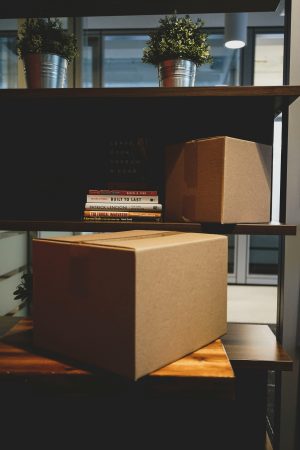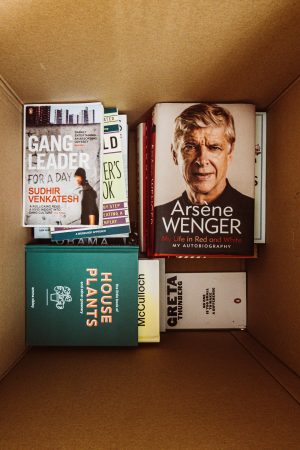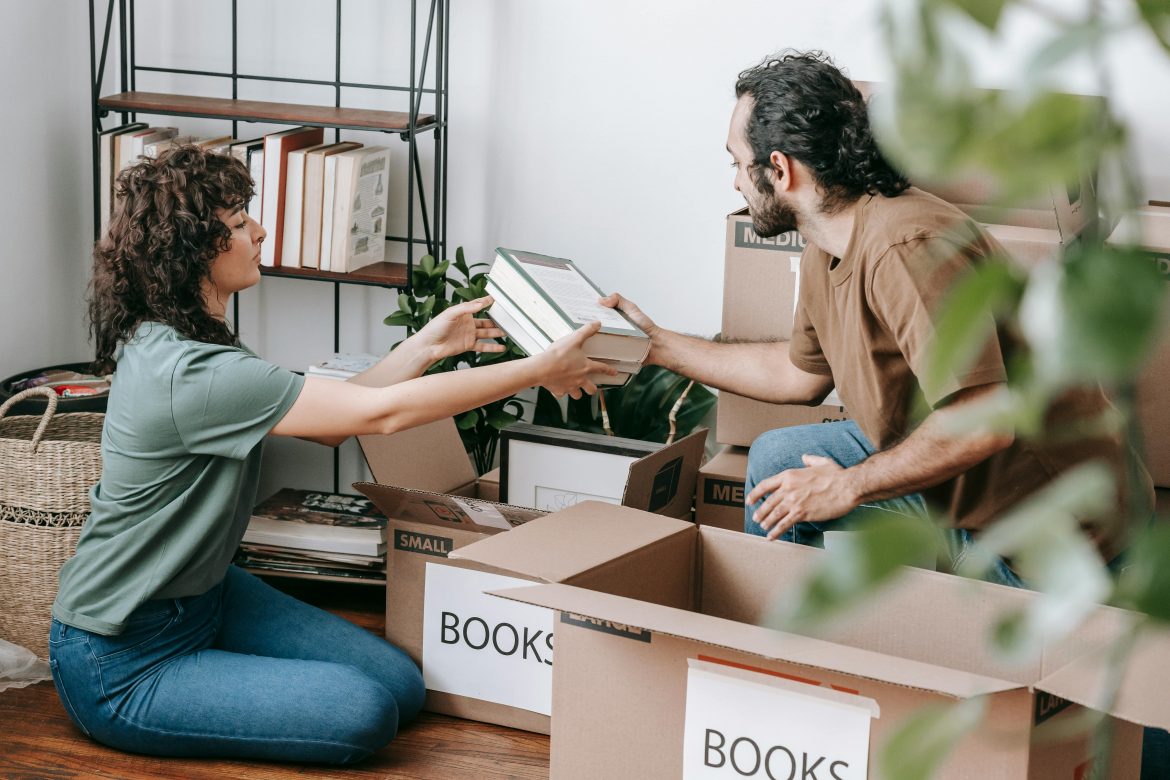Moving is stressful enough as it is. But nothing quite adds to the mayhem like trying to figure out how to pack your books. And while some might find dog ears and scuffs endearing, protecting your books is an absolute must.
Whether you’re just moving down the road, or making a cross-country trek, we’ve got you covered. Here’s how to pack your books when moving.

Unsplash
ALSO SEE: Top bookshelf organisation ideas
Sort and declutter
Decide what to keep
Before you start packing, take a moment to sort through your collection. Moving is the perfect time to declutter. Ask yourself if you need that battered copy of a book you haven’t read in years. Donate, sell, or give away books you no longer want or need. This will make packing easier and your load lighter.
Separate by size and weight
Organize your books by size and weight. Grouping similar-sized books together makes packing more efficient and prevents damage. Heavier books should be packed in smaller boxes to avoid overloading, while lighter books can go into larger boxes.

Pexels
Grab your supplies
The right boxes
Invest in sturdy boxes designed for moving. Medium-sized boxes are ideal for books as they are easier to carry and less likely to become too heavy. Recycled boxes from local stores can work, but ensure they are clean and strong. Avoid large boxes, which can become overwhelmingly heavy when filled with books.
Packing materials
You’ll need packing paper, bubble wrap, and tape to keep your books safe. Old newspapers can work in a pinch, but the ink might transfer onto your books. Bubble wrap is perfect for fragile or valuable books while packing paper provides a buffer against bumps.

Unsplash
Packing techniques
Lining your boxes
Start by lining the bottom of your boxes with a layer of packing paper or bubble wrap. This adds cushioning and helps protect your books from damage. You can also use a blanket or towel for added padding if you’re running low on packing materials.
Pack vertically
Place your books in the boxes vertically, like they are on a shelf. This method reduces the pressure on the spines and keeps them in better shape. If you need to lay books flat, make sure to stack them in layers, with the heaviest on the bottom to avoid crushing.
Fill the gaps
Use packing paper or bubble wrap to fill any gaps between the books. This prevents them from shifting during the move, which can cause damage. Avoid overpacking the boxes—leave a bit of room to close them easily without forcing the flaps down.

Pexels
Special care for valuables
Protect fragile books
For rare or fragile books, wrap each one individually in bubble wrap. Secure the wrap with tape and place these books in a separate box labelled “Fragile.” This ensures they receive the extra care they need during the move.
Use plastic Bbins
Consider using plastic bins for books that are particularly valuable or irreplaceable. They offer more protection against water damage and are sturdier than cardboard boxes. Line the bins with packing paper for added cushioning.
Label and Load
Add clear labels
Label each box with its contents and destination room. For example, “Books – Living Room” or “Books – Study.” This makes unpacking easier and helps movers know where to place each box. If you have a lot of books, numbering the boxes and keeping a list of their contents can be a lifesaver.
Load carefully
When loading your boxes onto the moving truck, stack the heaviest boxes on the bottom and the lighter ones on top. Avoid placing heavy items on top of your book boxes to prevent crushing. If you’re moving yourself, use a dolly to transport the heavier boxes to avoid injury.

Pexels
Unpacking tips
Unpack early
Unpack your books early in the moving process. This helps to quickly reduce the number of boxes and makes your new space feel like home. Arrange them on your shelves right away to avoid damage from sitting in boxes for too long.
Reassemble your library
Recreate your book collection in your new home. Arrange your books in a way that makes sense to you—alphabetically, by genre, or even by colour for a bit of flair. Enjoy rediscovering your collection as you unpack.
ALSO SEE:
Featured Image: Pexels

